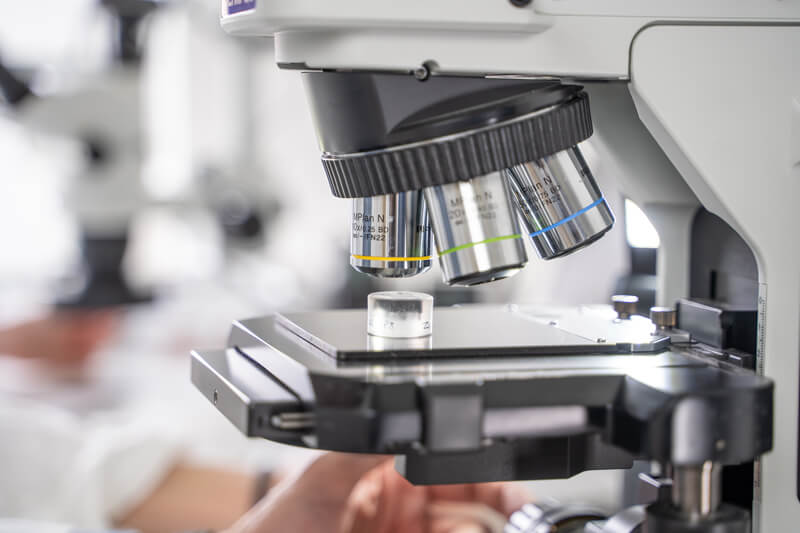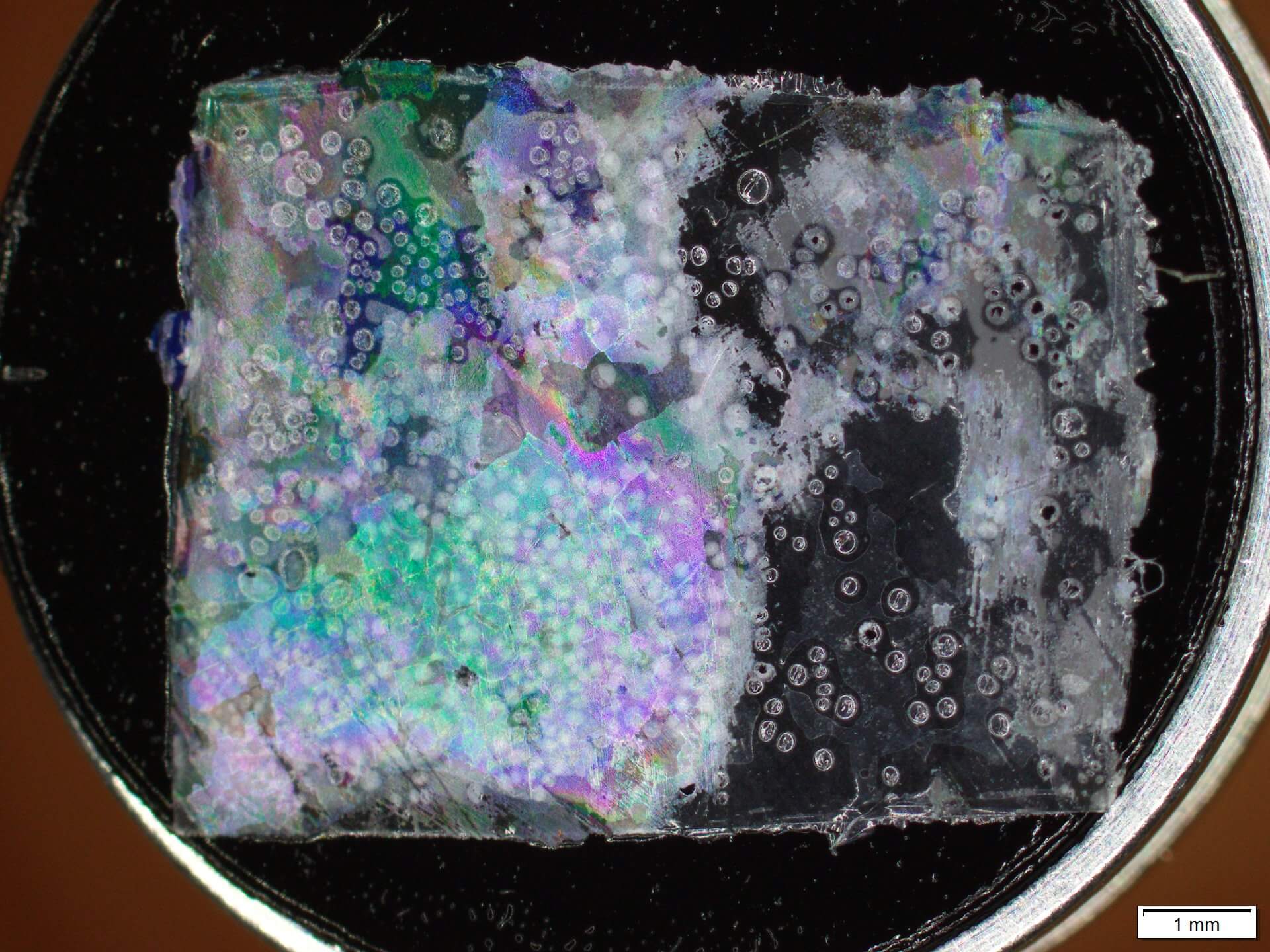
ANALYSIS GLASS, ENAMEL, STAINED GLASS
As with some materials, there is no method for dating glass, or enamel per se. But, by coupling several methods, CIRAM laboratories offer scientific analyses that provide chronological information to make a statement about the age of your glass objects.
The study of glass, stained glass and enamel art
For glass and enamel, the analysis focuses on their composition, their state of alteration, as well as the origin of the alteration. For example, we are able to participate in the authentication of a glass or enamel object as part of an acquisition for a museum.
Analysis of an art object is always done by combining different laboratory analyses (optical microscopy, electron microscopy, or imaging) performed by specialized scientists. Each technique provides specific information that will ultimately form a cluster of clues that will allow one to make a judgment about the antiquity or modernity of a piece.
Glass composition, an important first step
The composition of glass says a lot about its origin and history: vitrifiers, stabilizers, fluxes, pigments, etc. The composition of the glass may be significant of an era or civilization. The concentration of lead or potassium will indicate whether the glass technique corresponds to the Middle Ages or the Renaissance. The nature of the pigments will identify a modern production, for example cadmium or chromium will date 19th or 20th century glass or stained glass.
Our scientists analyze the chemical nature of glass and the chromogenic elements present. The study of the chemical composition brings objective data that our laboratory teams interpret to pronounce on the age of the glass objects.
In France or abroad, many museums, auction rooms, antique dealers, private collectors trust us.

The weathering of glass and enamel
The most important part of examining a glass object is the analysis of its weathering. A glass object, hundreds or thousands of years old, will have undergone environmental weathering, such as humidity, temperature variations, and the growth of microorganisms, to name just three. These factors lead to degradation of the glass, analysis of which can provide chronological clues (antiquity or modernity).
The most characteristic signs of natural aging and considered consistent with ancient glass include significant weathering of the glass surface and sometimes its entire thickness, alkali leaching, a multi-layered laminated microstructure (onion skin appearance) and micro-bubbled facies, silica gel formation; associated sediment layers. On the other hand, if fluorine is detected in the altered areas, we are in the presence of artificial and modern alteration, i.e., incompatible with an ancient period.

METHODS EMPLOYED FOR THE ANALYSIS OF GLASS AND ENAMEL OBJECTS
Depending on the nature of the objects, we proceed to:
Analysis of a microsection
When the object allows, we take a microscopic sample. This sample is then indurated in epoxy resin and a microsection perpendicular to the surface is made.
Optical and electron microscopy (SEM) observation of this microsection reveals the depth of weathering penetration and the development of multi-layered structures that diffract light and reveal the iridescence characteristic of antique glass.
Analysis of surface replicas
When taking a sample is not an option, we use surface replicas. This consists of a film of cellulose acetate that is deposited on the object and will peel off the most superficial layers of the material, as well as the surface deposits.
Their chemical analysis by optical and electron microscopy (SEM-EDX) will allow us to identify the origin of the glass alteration: natural or artificial. For example, the presence of fluorine will be a formal indication of a modern chemical attack.
Non-destructive or zero sample analysis
When no sampling is possible, the extracted beam PIXE probe analysis is the alternative solution par excellence.
In fact, this non-destructive method allows the analysis of the chemical composition of a glass object in ambient atmosphere. It will quantify major, minor and trace elements and provide information on manufacturing techniques.
CIRAM, specialist in the dating of works of art
To enable reliable and relevant analysis, we conduct laboratory analysis with state-of-the-art technology. Our teams of scientists conduct research at the heart of the objects, but also on the surface to gather objective and accurate information, in order to assess the state of conservation of the object and provide authentication.
Specialists in the dating and analysis of works of art, all the major players in the art market (museums, auction houses, antique dealers, experts, private collectors) already trust us in France and abroad for the analysis and dating of their collections.
CRIAM’s expertise is recognized worldwide. Our laboratories analyze works of art made of glass, enamel, wood, ivory, stone or even metal. Using state-of-the-art technologies such as carbon-14 (or radiocarbon) dating, scanning electron microscopy, elemental analysis, isotopic analysis, scientific imaging and many other methods, we offer accurate, rigorous and relevant dating and analysis of your works of art.
Discover CIRAM’s other fields of expertise:
